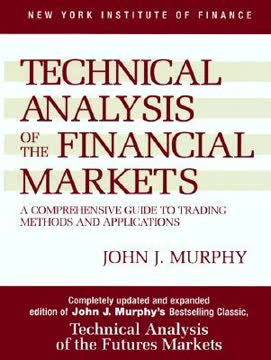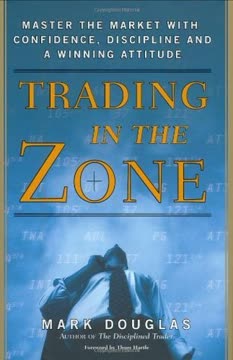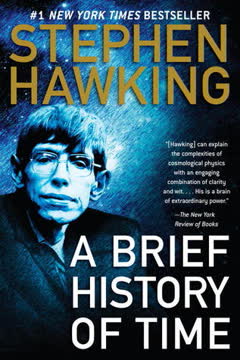Key Takeaways
1. Candlestick Charts: Visualizing Market Psychology
"It is not an exaggeration to say that candlesticks are the best in the world and a very exquisite creation for charts."
Visual Storytelling. Candlestick charts, unlike bar charts, visually represent the battle between buyers and sellers. The "real body" (the filled or hollow rectangle) shows the range between the open and close, while the "shadows" (the thin lines above and below) reveal the session's price extremes. This visual clarity makes it easier to grasp the underlying market sentiment.
Japanese Origins. Developed in Japan centuries ago for trading rice futures, candlestick charting techniques were virtually unknown in the West until recently. They are now a fundamental tool for traders worldwide, offering a unique perspective on market dynamics. The Japanese focus on the relationship between the open and close, which are probably the two most important prices of the day.
Beyond Bar Charts. Candlestick charts use the same data as bar charts (open, high, low, and close), but they provide additional insights. They can often signal imminent reversals in one to three sessions, offering more timely trading opportunities. The color of the real body (white for a higher close, black for a lower close) adds another layer of analysis, quickly displaying the relative strength of bulls and bears.
2. Real Bodies and Shadows: Decoding Price Action
"The real body is the essence of the price movement."
Real Body Significance. The size and color of the real body are crucial indicators of market strength. A long white real body suggests strong buying pressure, while a long black real body indicates strong selling pressure. The length of the real body, especially when compared to prior real bodies, can signal a shift in market momentum.
Shadows as Clues. The shadows, or wicks, above and below the real body reveal the session's price extremes. Long upper shadows at high prices suggest that the bears are regaining control, while long lower shadows at low prices indicate that the bulls are stepping in. These shadows provide valuable information about the market's underlying strength or weakness.
Spinning Tops and Doji. Small real bodies, called spinning tops, reflect a market where the bulls and bears are in a tug of war. Doji, which have no real body (the open and close are the same), indicate a market in transition. These candles, while seemingly neutral, can be powerful signals of potential reversals, especially after a strong trend.
3. Single Candle Patterns: Early Clues to Market Turns
"With the fall of one leaf we know that autumn has come to the world."
Hammer and Hanging Man. The hammer and hanging man share the same shape—a small real body with a long lower shadow—but their implications differ based on their location. A hammer, appearing after a downtrend, is a bullish reversal signal, while a hanging man, appearing after an uptrend, is a bearish reversal signal.
Shooting Star. The shooting star, with its long upper shadow and small real body near the bottom of the trading range, is a bearish reversal signal. It indicates that the bears have been able to sharply drag prices back from their highs. These single candle lines, while not always sufficient for placing a trade, can provide early clues about potential market turns.
Confirmation is Key. It's important to note that single candle lines are most effective when they appear after a significant trend. For example, a hammer is more meaningful after a substantial decline, and a hanging man is more significant after a strong rally. Confirmation from subsequent sessions is often needed to validate these signals.
4. Dual Candle Patterns: Confirming Reversals and Continuations
"The psychology of the market participant, the supply and demand equation, and the relative strengths of the buyers and sellers are all reflected in the one candlestick or in a combination of candlesticks."
Dark Cloud Cover and Piercing Pattern. The dark cloud cover, a bearish reversal pattern, occurs when a black candle closes well into the prior white candle. The piercing pattern, a bullish reversal pattern, is the opposite, with a white candle closing well into the prior black candle. These patterns show a shift in market momentum.
Engulfing Patterns. Bullish and bearish engulfing patterns occur when a real body completely engulfs the prior real body. A bullish engulfing pattern, with a white candle engulfing a black candle, is a bottom reversal signal. A bearish engulfing pattern, with a black candle engulfing a white candle, is a top reversal signal. These patterns are more powerful than the dark cloud cover and piercing patterns.
Harami and Last Engulfing Patterns. The harami pattern, with a small real body within a larger real body, signals a potential pause or reversal. Last engulfing patterns, which occur during a trend, can be either bullish or bearish, depending on the context. These patterns highlight the importance of considering the overall trend when interpreting candle signals.
5. Beyond Candles: The Disparity Index and Trend
"When all are bearish, there is cause for prices to rise. When everyone is bullish there is cause for the price to fall."
Disparity Index. The disparity index compares the current price to a moving average, providing a measure of how overbought or oversold the market is. This tool is used in the same manner as dual moving averages, but it has an interesting wrinkle to it. It helps traders identify potential turning points by highlighting when prices have moved too far from their average.
Trend is Key. The disparity index is most effective when used in conjunction with trend analysis. A high disparity index reading in an uptrend may signal a temporary overbought condition, while a low reading in a downtrend may indicate an oversold condition. The disparity index is used in the same manner as dual moving averages, but it has an interesting wrinkle to it.
Contrarian Thinking. The disparity index can also be used to identify contrarian opportunities. When the market is extremely overbought or oversold, it may be a sign that a reversal is imminent. This approach aligns with the Japanese concept of contrarian opinion, which suggests that when everyone is bullish, it's time to be cautious, and vice versa.
6. Three-Line Break, Renko, and Kagi Charts: New Perspectives on Price
"After 60 years of working day and night I have gradually acquired a deep understanding of the movements of the rice market."
Three-Line Break Charts. These charts filter out noise by only adding a new line when the price breaks above or below the prior three lines. This technique is excellent for determining the trend of the market. They are excellent technical tools for determining the trend of the market.
Renko Charts. Renko charts use equal-sized "bricks" to represent price movements, ignoring time. A new brick is added only when the price moves by a predetermined amount. This method is excellent for determining the trend of the market.
Kagi Charts. Kagi charts use a series of vertical lines connected by short horizontal lines. The thickness of the vertical lines changes based on price action, providing a visual representation of market momentum. They are excellent technical tools for determining the trend of the market.
Japanese Innovation. These charting techniques, popular in Japan, are virtually unknown in the West. They offer a unique perspective on price action, focusing on price changes rather than time. They are excellent technical tools for determining the trend of the market.
7. Integrating Tools: The Importance of the Overall Technical Picture
"The Buddha is Complete, But the Eyes Are Not in Yet" (The Job is Not Yet Done)
Beyond Individual Patterns. While individual candle patterns can provide valuable insights, it's crucial to consider the overall technical picture. This includes factors like trend, support and resistance levels, and the risk/reward ratio of a potential trade.
Combining Techniques. Candlestick charts can be used in conjunction with other technical tools, such as trendlines, moving averages, and the disparity index. This integrated approach provides a more comprehensive view of the market and increases the likelihood of successful trades.
Market Chameleon. Adapting to changing market conditions is essential for success. Traders must be willing to adjust their strategies based on new information and be flexible in their approach. This means being a "market chameleon" and adapting to the market's ever-changing environment.
8. Trading Tactics: Stops, Risk/Reward, and Market Adaptation
"He Whose Ranks are United in Purpose Will Be Victorious"
Protective Stops. Always use protective stops to limit potential losses. A stop-loss order is a price at which you say your outlook is wrong. This is a critical aspect of risk management.
Risk/Reward Ratio. Before placing a trade, always consider the risk/reward ratio. The potential reward should always outweigh the risk. This is a critical aspect of risk management.
Market Adaptation. Be prepared to adapt to changing market conditions. If the market does not behave as expected, be willing to adjust your strategy. This is a critical aspect of risk management.
Patience and Discipline. Trading requires patience and discipline. Do not rush into trades based solely on a single candle pattern. Wait for the right moment and always consider the overall technical picture.
Last updated:
Review Summary
Beyond Candlesticks receives mostly positive reviews, with an average rating of 4.19 out of 5. Readers appreciate the in-depth coverage of candlestick charting techniques, including Renko, three-line break, and kagi charts. Many find it valuable for understanding market psychology and improving trading strategies. Some criticize the writing style as repetitive and elementary, with occasional editing issues. The book is generally recommended as a follow-up to introductory candlestick texts, offering advanced insights for both beginners and experienced traders seeking to enhance their chart analysis skills.
Similar Books










Download PDF
Download EPUB
.epub digital book format is ideal for reading ebooks on phones, tablets, and e-readers.





